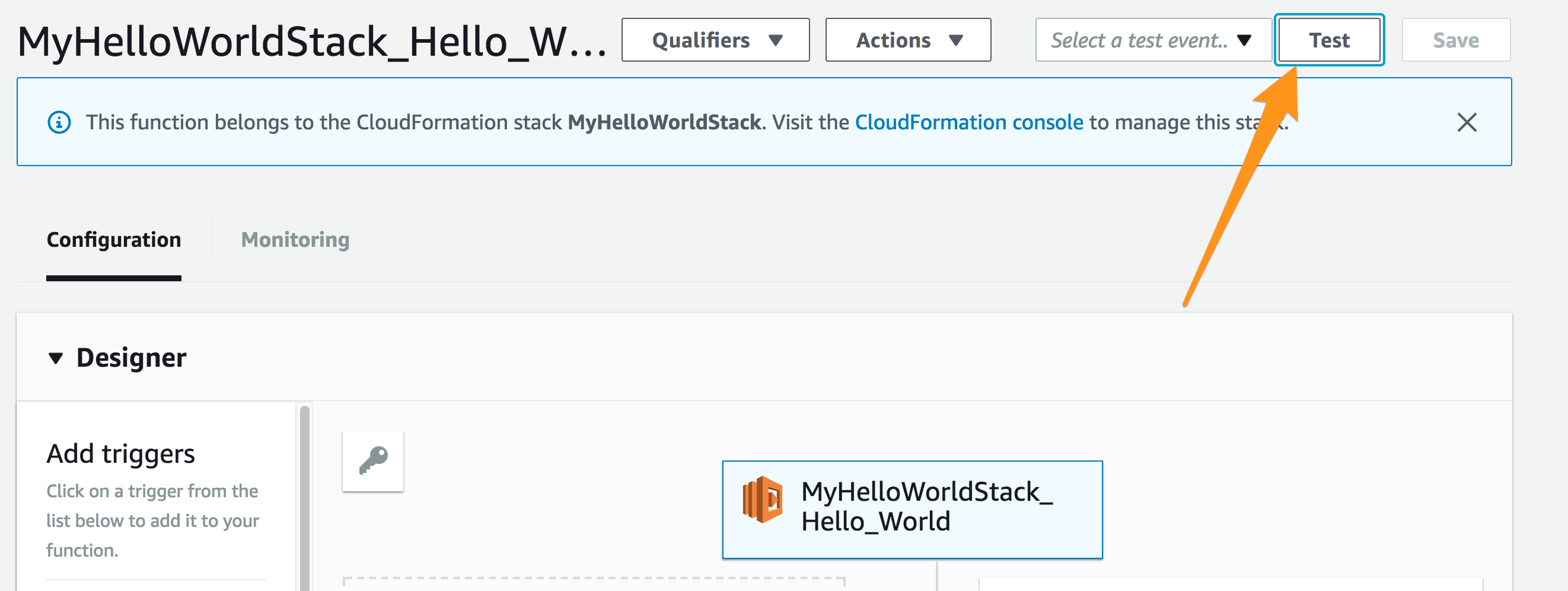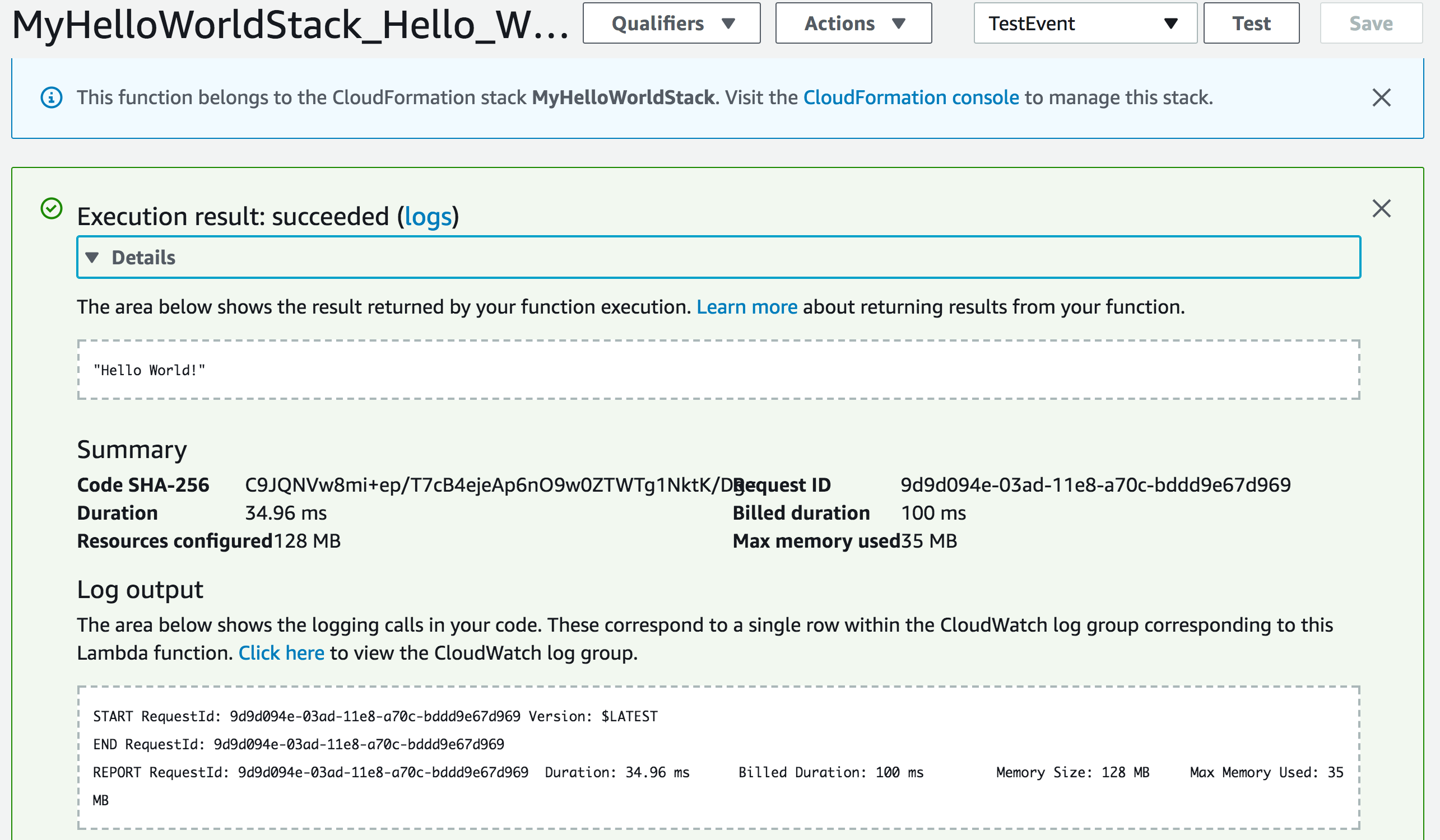Overview
Sparta is a framework for developing and deploying go based AWS Lambda-backed microservices. To help understand what that means we’ll begin with a “Hello World” lambda function and eventually deploy that to AWS. Note that we’re not going to handle all error cases to keep the example code to a minimum.
Please be aware that running Lambda functions may incur costs. Be sure to decommission Sparta stacks after you are finished using them (via the delete command line option) to avoid unwanted charges. It’s likely that you’ll be well under the free tier, but secondary AWS resources provisioned during development (eg, Kinesis streams) are not pay-per-invocation.
Preconditions
Sparta uses the AWS SDK for Go to interact with AWS APIs. Before you get started, ensure that you’ve properly configured the SDK credentials.
Note that you must use an AWS region that supports Lambda. Consult the Global Infrastructure page for the most up to date release information.
Lambda Definition
The first place to start is with the lambda function definition.
// Standard AWS λ function
func helloWorld(ctx context.Context) (string, error) {
return "Hello World!", nil
}
The ctx parameter includes the following entries:
- The AWS LambdaContext
- A *zerolog.Logger instance (
sparta.ContextKeyLogger) - A per-request annotated *zerolog.Logger instance (
sparta.ContextKeyRequestLogger)
Creation
The next step is to create a Sparta-wrapped version of the helloWorld function.
func main() {
var lambdaFunctions []*sparta.LambdaAWSInfo
helloWorldFn, _ := sparta.NewAWSLambda("Hello World", helloWorld, sparta.IAMRoleDefinition{})
...
}
We first declare an empty slice lambdaFunctions to which all our service’s lambda functions will be appended. The next step is to register a new lambda target via NewAWSLambda. NewAWSLambda accepts three parameters:
string: The function name. A sanitized version of this value is used as the FunctionName.func(...): The go function to execute.string|IAMRoleDefinition: Either a string literal that refers to a pre-existing IAM Role under which the lambda function will be executed, OR asparta.IAMRoleDefinitionvalue that will be provisioned as part of this deployment and used as the execution role for the lambda function.- In this example, we’re defining a new
IAMRoleDefinitionas part of the stack. This role definition will automatically include privileges for actions such as CloudWatch logging, and since our function doesn’t access any additional AWS services that’s all we need.
- In this example, we’re defining a new
Delegation
The final step is to define a Sparta service under your application’s main package and provide the non-empty slice of lambda functions:
func main() {
var lambdaFunctions []*sparta.LambdaAWSInfo
helloWorldFn, _ := sparta.NewAWSLambda("Hello World", helloWorld, sparta.IAMRoleDefinition{})
sparta.Main("MyHelloWorldStack",
"Simple Sparta application that demonstrates core functionality",
lambdaFunctions,
nil,
nil)
}
sparta.Main accepts five parameters:
serviceName: The string to use as the CloudFormation stackName. Note that there can be only a single stack with this name within a given AWS account, region pair.- The
serviceNameis used as the stable identifier to determine when updates should be applied rather than new stacks provisioned, as well as the target of adeletecommand line request. - Consider using UserScopedStackName to generate unique, stable names across a team.
- The
serviceDescription: An optional string used to describe the stack.[]*LambdaAWSInfo: Slice ofsparta.lambdaAWSInfothat define a service*API: Optional pointer to data if you would like to provision and associate an API Gateway with the set of lambda functions.- We’ll walk through how to do that in another section, but for now our lambda function will only be accessible via the AWS SDK or Console.
*S3Site: Optional pointer to data if you would like to provision an static website on S3, initialized with local resources.- We’ll walk through how to do that in another section, but for now our lambda function will only be accessible via the AWS SDK or Console.
Delegating main() to Sparta.Main() transforms the set of lambda functions into a standalone executable with several command line options. Run go run main.go --help to see the available options.
Putting It Together
Putting everything together, and including the necessary imports, we have:
// File: main.go
package main
import (
"context"
sparta "github.com/mweagle/Sparta/v3"
)
// Standard AWS λ function
func helloWorld(ctx context.Context) (string, error) {
return "Hello World!", nil
}
func main() {
var lambdaFunctions []*sparta.LambdaAWSInfo
helloWorldFn, _ := sparta.NewAWSLambda("Hello World",
helloWorld,
sparta.IAMRoleDefinition{})
lambdaFunctions = append(lambdaFunctions, helloWorldFn)
sparta.Main("MyHelloWorldStack",
"Simple Sparta application that demonstrates core functionality",
lambdaFunctions,
nil,
nil)
}
Running It
Next download the Sparta dependencies via:
go get ./...
in the directory that you saved main.go. Once the packages are downloaded, first get a view of what’s going on by the describe command (replacing $S3_BUCKET with an S3 bucket you own):
$ go run main.go --level info describe --out ./graph.html --s3Bucket $S3_BUCKET
INFO[0000] ════════════════════════════════════════════════
INFO[0000] ╔═╗╔═╗╔═╗╦═╗╔╦╗╔═╗ Version : 1.13.0
INFO[0000] ╚═╗╠═╝╠═╣╠╦╝ ║ ╠═╣ SHA : 03cdb90
INFO[0000] ╚═╝╩ ╩ ╩╩╚═ ╩ ╩ ╩ Go : go1.13.3
INFO[0000] ════════════════════════════════════════════════
INFO[0000] Service: MyHelloWorldStack-123412341234 LinkFlags= Option=describe UTC="2019-12-07T20:01:48Z"
INFO[0000] ════════════════════════════════════════════════
INFO[0000] Provisioning service BuildID=none CodePipelineTrigger= InPlaceUpdates=false NOOP=true Tags=
INFO[0000] Verifying IAM Lambda execution roles
INFO[0000] IAM roles verified Count=1
INFO[0000] Skipping S3 preconditions check due to -n/-noop flag Bucket=weagle Region=us-west-2 VersioningEnabled=false
INFO[0000] Running `go generate`
INFO[0000] Compiling binary Name=Sparta.lambda.amd64
INFO[0001] Creating code ZIP archive for upload TempName=./.sparta/MyHelloWorldStack_123412341234-code.zip
INFO[0001] Lambda code archive size Size="24 MB"
INFO[0001] Skipping S3 upload due to -n/-noop flag Bucket=weagle File=MyHelloWorldStack_123412341234-code.zip Key=MyHelloWorldStack-123412341234/MyHelloWorldStack_123412341234-code-ec0d6f8bae7b6a7abaa77db394c96265e213d20d.zip Size="24 MB"
INFO[0001] Skipping Stack creation due to -n/-noop flag Bucket=weagle TemplateName=MyHelloWorldStack_123412341234-cftemplate.json
INFO[0001] ════════════════════════════════════════════════
INFO[0001] MyHelloWorldStack-123412341234 Summary
INFO[0001] ════════════════════════════════════════════════
INFO[0001] Verifying IAM roles Duration (s)=0
INFO[0001] Verifying AWS preconditions Duration (s)=0
INFO[0001] Creating code bundle Duration (s)=1
INFO[0001] Uploading code Duration (s)=0
INFO[0001] Ensuring CloudFormation stack Duration (s)=0
INFO[0001] Total elapsed time Duration (s)=1
Then open graph.html in your browser (also linked here ) to see what will be provisioned.
Since everything looks good, we’ll provision the stack via provision and verify the lambda function. Note that the $S3_BUCKET value must be an S3 bucket to which you have write access since Sparta uploads the lambda package and CloudFormation template to that bucket as part of provisioning.
INFO[0000] ════════════════════════════════════════════════
INFO[0000] ╔═╗╔═╗╔═╗╦═╗╔╦╗╔═╗ Version : 1.13.0
INFO[0000] ╚═╗╠═╝╠═╣╠╦╝ ║ ╠═╣ SHA : 03cdb90
INFO[0000] ╚═╝╩ ╩ ╩╩╚═ ╩ ╩ ╩ Go : go1.13.3
INFO[0000] ════════════════════════════════════════════════
INFO[0000] Service: MyHelloWorldStack-123412341234 LinkFlags= Option=provision UTC="2019-12-07T19:53:24Z"
INFO[0000] ════════════════════════════════════════════════
INFO[0000] Using `git` SHA for StampedBuildID Command="git rev-parse HEAD" SHA=b114e329ed37b532e1f7d2e727aa8211d9d5889c
INFO[0000] Provisioning service BuildID=b114e329ed37b532e1f7d2e727aa8211d9d5889c CodePipelineTrigger= InPlaceUpdates=false NOOP=false Tags=
INFO[0000] Verifying IAM Lambda execution roles
INFO[0000] IAM roles verified Count=1
INFO[0000] Checking S3 versioning Bucket=weagle VersioningEnabled=true
INFO[0000] Checking S3 region Bucket=weagle Region=us-west-2
INFO[0000] Running `go generate`
INFO[0001] Compiling binary Name=Sparta.lambda.amd64
INFO[0002] Creating code ZIP archive for upload TempName=./.sparta/MyHelloWorldStack_123412341234-code.zip
INFO[0002] Lambda code archive size Size="24 MB"
INFO[0002] Uploading local file to S3 Bucket=weagle Key=MyHelloWorldStack-123412341234/MyHelloWorldStack_123412341234-code.zip Path=./.sparta/MyHelloWorldStack_123412341234-code.zip Size="24 MB"
INFO[0011] Uploading local file to S3 Bucket=weagle Key=MyHelloWorldStack-123412341234/MyHelloWorldStack_123412341234-cftemplate.json Path=./.sparta/MyHelloWorldStack_123412341234-cftemplate.json Size="2.2 kB"
INFO[0011] Issued CreateChangeSet request StackName=MyHelloWorldStack-123412341234
INFO[0016] Issued ExecuteChangeSet request StackName=MyHelloWorldStack-123412341234
INFO[0033] CloudFormation Metrics ▬▬▬▬▬▬▬▬▬▬▬▬▬▬▬▬▬▬▬▬▬▬▬▬▬
INFO[0033] Operation duration Duration=8.26s Resource=MyHelloWorldStack-123412341234 Type="AWS::CloudFormation::Stack"
INFO[0033] Operation duration Duration=1.35s Resource=HelloWorldLambda80576f7b21690b0cb485a6b69c927aac972cd693 Type="AWS::Lambda::Function"
INFO[0033] Stack provisioned CreationTime="2019-11-28 00:05:04.508 +0000 UTC" StackId="arn:aws:cloudformation:us-west-2:123412341234:stack/MyHelloWorldStack-123412341234/bab01fb0-1172-11ea-84a9-0ab88639bbc6" StackName=MyHelloWorldStack-123412341234
INFO[0033] ════════════════════════════════════════════════
INFO[0033] MyHelloWorldStack-123412341234 Summary
INFO[0033] ════════════════════════════════════════════════
INFO[0033] Verifying IAM roles Duration (s)=0
INFO[0033] Verifying AWS preconditions Duration (s)=0
INFO[0033] Creating code bundle Duration (s)=1
INFO[0033] Uploading code Duration (s)=9
INFO[0033] Ensuring CloudFormation stack Duration (s)=22
INFO[0033] Total elapsed time Duration (s)=33
Once the stack has been provisioned (CREATE_COMPLETE), login to the AWS console and navigate to the Lambda section.
Testing
Find your Lambda function in the list of AWS Lambda functions and click the hyperlink. The display name will be prefixed by the name of your stack (MyHelloWorldStack in our example):

On the Lambda details page, click the Test button:

Accept the and name the Hello World event template sample (our Lambda function doesn’t consume the event data) and click Save and test. The execution result pane should display something similar to:

Cleaning Up
To prevent unauthorized usage and potential charges, make sure to delete your stack before moving on:
$ go run main.go delete
INFO[0000] ════════════════════════════════════════════════
INFO[0000] ╔═╗┌─┐┌─┐┬─┐┌┬┐┌─┐ Version : 1.0.2
INFO[0000] ╚═╗├─┘├─┤├┬┘ │ ├─┤ SHA : b37b93e
INFO[0000] ╚═╝┴ ┴ ┴┴└─ ┴ ┴ ┴ Go : go1.9.2
INFO[0000] ════════════════════════════════════════════════
INFO[0000] Service: MyHelloWorldStack LinkFlags= Option=delete UTC="2018-01-27T22:01:59Z"
INFO[0000] ════════════════════════════════════════════════
INFO[0000] Stack existence check Exists=true Name=MyHelloWorldStack
INFO[0000] Delete request submitted Response="{\n\n}"
Conclusion
Congratulations! You’ve just deployed your first “serverless” service. The following sections will dive deeper into what’s going on under the hood as well as how to integrate your lambda function(s) into the broader AWS landscape.
Next Steps
Walkthrough what Sparta actually does to deploy your application in the next section.